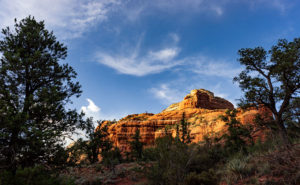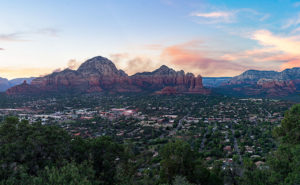Seeing a photograph isn’t predictable. Sometimes you find a subject and wait for the light to be right as I did for the image Capitol Butte from a couple of weeks ago. Ansel Adams was notoriously patient about doing this. Sometimes he’d wait hours or days for the light to come in. Sometimes you see an image as you’re walking a trail and you drop to your knees to capture it. That’s what happened when I shot last week’s featured image Prickly Juniper. Sometimes a subject will show up through the car window and you’ll have to jump out of the car and grab it. That’s the story behind Ansel Adam’s masterpiece Moonrise over Hernandez. He saw the image forming through the windshield, stopped his car to set-up his view camera and had to calculate the exposure without a light meter. I’m not comparing the two photographs, but that’s also the story of this week’s featured image that I call North Side Capitol Butte—except for the light meter part.

I was driving into town from the hiking trail and I was paying attention at the light on Capitol Butte. While I was driving, I saw the butte framed between two trees, so I stopped the car and got out and moved in for the kill. This framing technique was very popular in the Hudson River School style of painting. The center subject is lit between two darker shapes to keep your eye from wandering off the canvas. The technique fell out of favor as the Impressionist began to gain popularity. Just because something’s no longer popular, there isn’t any reason you can’t drag it out of the closet now and then.
You can see a larger version of North Side Capitol Butte on its Web Page by clicking here. I hope you enjoy viewing this week’s post and come back next week when we’ll present the last image from Sedona Month.
Until next time — jw

